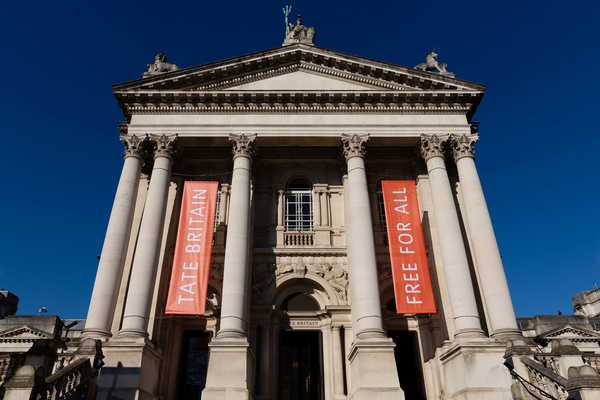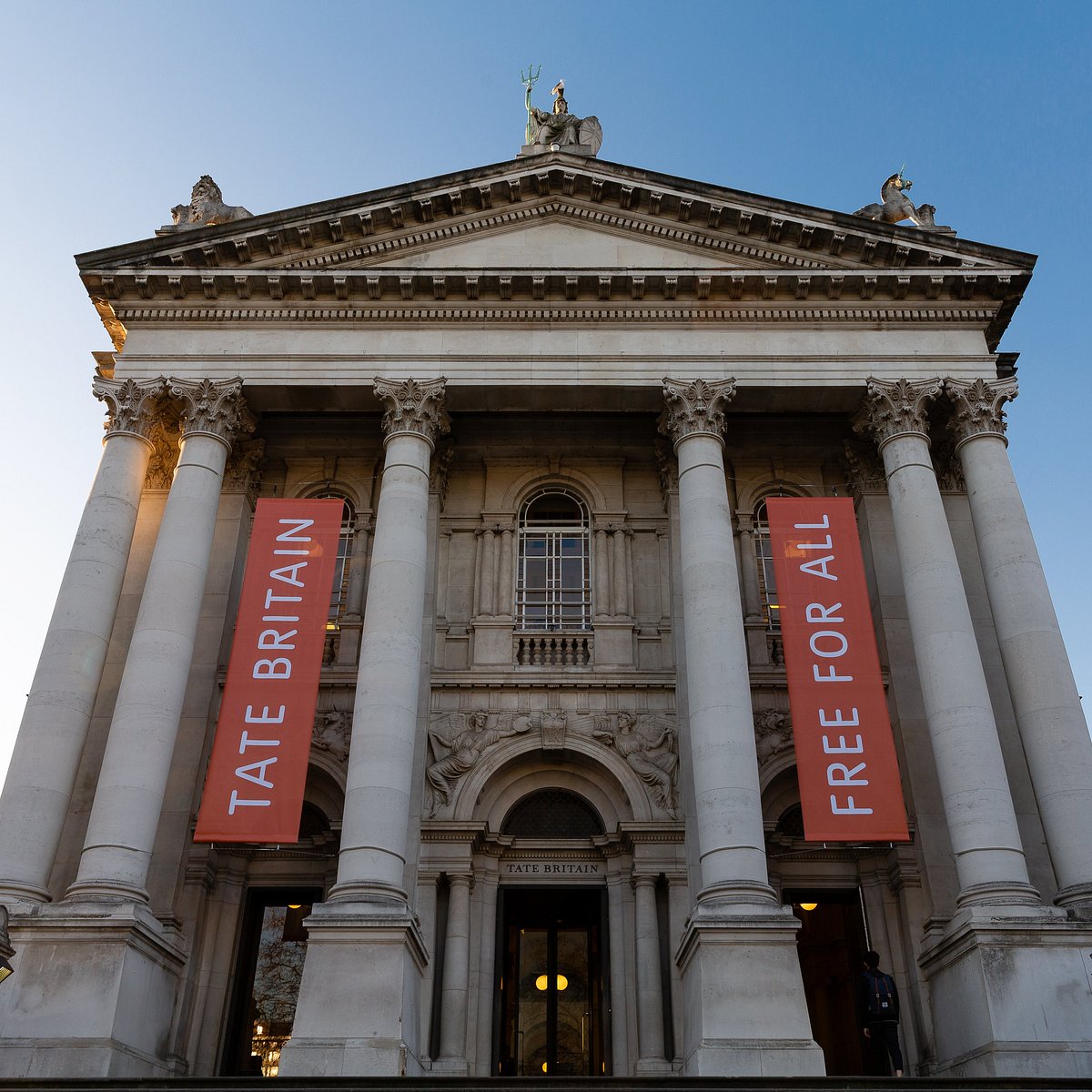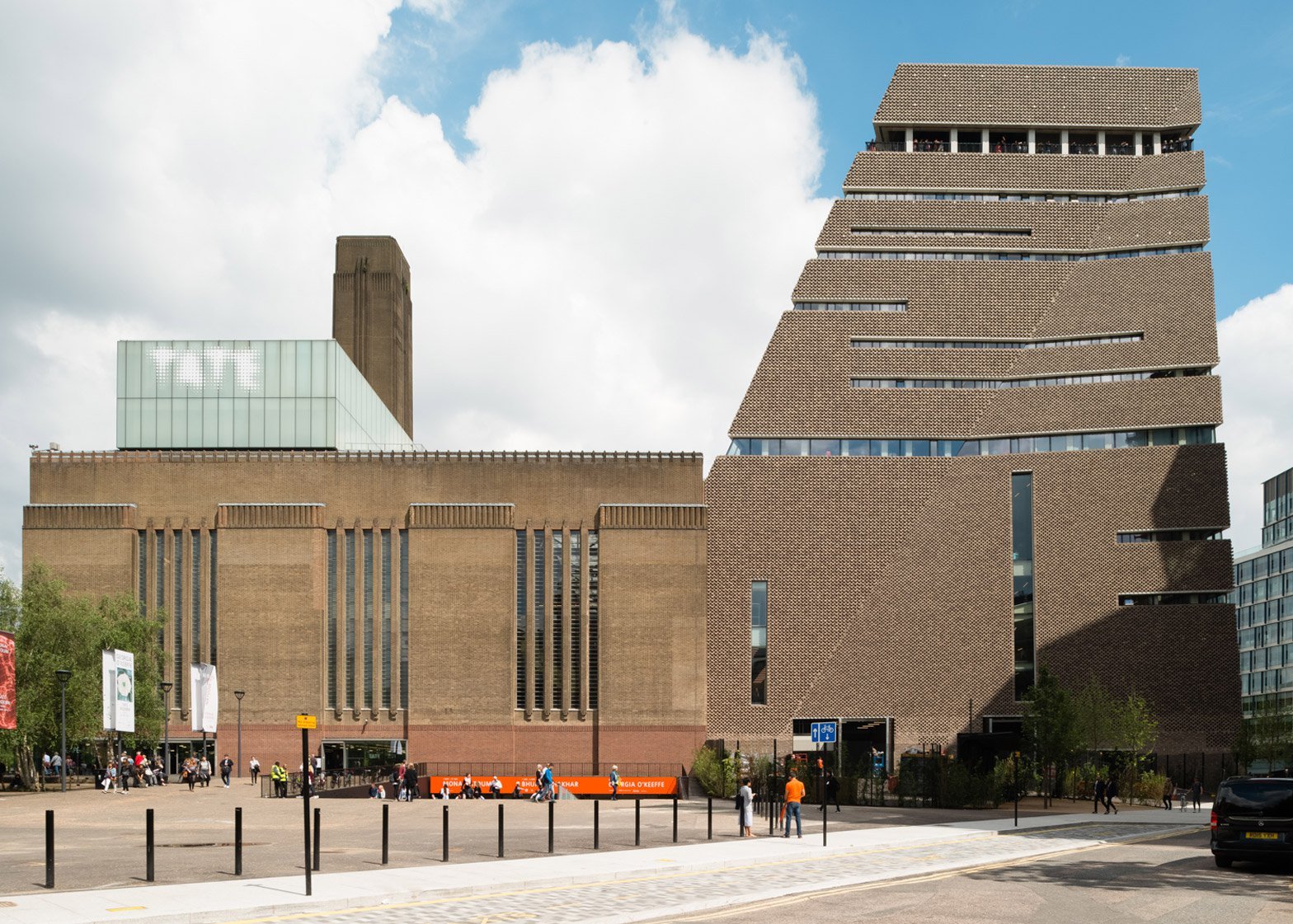There's quite a bit of talk swirling around the name "Tate" these days, and it can be a little confusing, too it's almost. You see, when folks mention "Tate," they might actually be talking about a couple of really different things. On one hand, you have the rather famous group of art galleries right here in the United Kingdom, places like Tate Modern, Tate Britain, Tate St Ives, and Tate Liverpool. These are, in a way, truly important spots for art lovers, holding vast collections that tell stories through British and international art across centuries.
Then, there's another "Tate" that pops up quite a lot in conversations, especially online. This is Emory Andrew Tate III, a personality who has gained a fair amount of attention for his activities on social media and his past as a kickboxer. He's certainly a figure who sparks a lot of discussion, and that, is that, can sometimes lead to a bit of a mix-up when people are trying to figure out just who or what is being referenced. It's almost like two completely separate universes sharing a very similar name, really.
So, we're going to take a closer look at both of these "Tates," helping to sort out what each one is all about. We'll explore the art institutions that hold so much cultural significance and then touch upon the individual who has made a name for himself in the digital space. This way, you can get a clearer picture and maybe, just maybe, understand why the name "Tate" often brings up such varied topics, you know, in some respects.
Table of Contents
- Who Is Emory Andrew Tate III?
- Tate Galleries - A Cultural Pillar
- What Makes Tate Modern So Special Amidst Any Tate McRae Scandal Chatter?
- Exploring Tate Britain and Its Heritage
- How Do The Tate Galleries Connect With Visitors Beyond The Buzz Of A Tate McRae Scandal?
- A Look at Tate Liverpool and St Ives
- What Is The Organizational Structure Of Tate, Considering Any Tate McRae Scandal Narratives?
- The Online Presence of Tate and Its Reach
Who Is Emory Andrew Tate III?
Emory Andrew Tate III, born on the first day of December in 1986, is a person who has quite a diverse background, actually. He holds both American and British citizenship, which is kind of interesting. Before he became widely known for his online presence, he was a professional kickboxer, a sport where he certainly made a name for himself. His journey from the fighting ring to the digital world is a pretty unique one, you know.
These days, he's very much a social media personality, and he's also involved in various business ventures. He gained a fair amount of notoriety, as a matter of fact, for promoting a range of ideas and perspectives. This notoriety is something that has really defined his public image, making him a figure many people talk about, whether they agree with him or not. He's someone who, you know, tends to generate a lot of conversation, pretty much wherever he goes in the online space.
Personal Details and Bio Data of Emory Andrew Tate III
| Full Name | Emory Andrew Tate III |
| Born | 1 December 1986 |
| Nationality | American, British |
| Known For | Social media personality, businessman, former professional kickboxer |
| Notoriety From | Promoting various views and activities |
Tate Galleries - A Cultural Pillar
Now, let's shift our focus to the other "Tate," the one that stands as a truly significant institution in the art world. The Tate is, you know, basically a family of art galleries, and they are located in some really important cities across the UK. We're talking about London, Liverpool, and Cornwall. These aren't just any galleries; they are home to the United Kingdom's national collection of British art, spanning from the 16th century all the way up to today. They also house a very important collection of modern art from around the globe, which is pretty cool.
You'll find Tate Modern, which is a massive museum of its kind, and then there's Tate Britain, a place with a long history. There's also Tate St Ives, which has a wonderful connection to the art scene in Cornwall, and Tate Liverpool, plus RIBA North, which adds another dimension to the art experience in that city. These galleries are, in essence, the UK's national museum for British and modern art, and they play a really big part in showcasing artistic talent and history, you know, to the public.
The Tate holds a collection of British art that goes from 1900 right up to the present moment, and it also features international modern and contemporary art. It's a place where you can see how art has changed over time and how different artists from all over the world have expressed themselves. They are, you know, a group of four art galleries, all working together to bring amazing art to everyone. It's not a government body, but it's an institution that really houses a treasure trove of art, actually.
What Makes Tate Modern So Special Amidst Any Tate McRae Scandal Chatter?
Tate Modern, you know, is truly one of the largest museums of its kind anywhere, and it's a place where you can experience some of the world's most exciting modern and contemporary art. It's located right there in London, and it's a spot where you can really get a sense of how art has evolved and taken on new forms. People come from all over to see the innovative works that have really shaped how we look at art today, and that, is that, is pretty amazing to witness.
What's quite nice about Tate Modern is that its main gallery is free to visit, which makes it very accessible to everyone. This means you can just walk in and enjoy incredible pieces without having to worry about a ticket price. They want people to come and engage with the art, to make noise in the galleries, and to truly interact with the works. It's a very welcoming environment for exploring art that challenges and inspires, you know, even if there's some general chatter about a "tate mcrae scandal" or similar topics outside its walls, the art inside really speaks for itself.
The focus here is really on the art itself, the pieces that push boundaries and make you think. You can see things that are completely different from what you might expect, and that's part of the appeal. It's a place where artistic expression is celebrated in all its forms, and it really encourages visitors to have their own unique experience with the art. So, in a way, it's a hub for contemporary creativity, very much so.
Exploring Tate Britain and Its Heritage
Tate Britain has a very rich history, you know. It was first known as the National Gallery of British Art back in 1897, and then it changed its name to the Tate Gallery in 1932, before finally becoming Tate Britain in 2000. It's an art museum that sits on Millbank in the city of Westminster, which is a rather historic part of London, too it's almost. This gallery is a really important place because it focuses specifically on British art, giving visitors a deep look into the country's artistic journey through the centuries, you know, in some respects.
This gallery is often considered one of the very best museums in London, and for good reason. It houses the national collection of British art from the 16th century onwards, which means you can see everything from classic masterpieces to more recent works. It's a fantastic place to get an overview of British artistic achievement. I mean, it's really a comprehensive guide to British art history, actually.
When you visit, you can explore various exhibitions, attend events, take tours, and even participate in workshops. These offerings are updated all the time, so there's always something new to discover. It's a place that really invites you to engage with the art on many levels, allowing for a truly immersive experience. Tate Britain is also home to some of the world's most significant British artworks, which is pretty amazing.
How Do The Tate Galleries Connect With Visitors Beyond The Buzz Of A Tate McRae Scandal?
The Tate galleries, as a whole, are truly dedicated to making art accessible and enjoyable for everyone, you know. They offer unlimited free entry to every exhibition at all their galleries if you're a member, but even for general visitors, many parts are free, as we mentioned with Tate Modern. This commitment to accessibility is a really big part of their mission, basically.
They want people to come and experience art in a way that feels personal and meaningful. This means encouraging visitors to really look at the art, to think about it, and to even, you know, "make noise" in the galleries, which suggests a more relaxed and interactive atmosphere than some traditional museums. They are constantly updating their pages online, like tate online, which started back in 1998, to keep people informed about what's happening. This digital presence helps them reach a wider audience and keep art lovers in the loop, too it's almost.
The galleries aim to foster a genuine connection with their audience, going beyond just displaying art. They want to inspire, to educate, and to provoke thought. So, regardless of any general chatter or search terms like "tate mcrae scandal" that might be circulating online, the actual experience at the Tate galleries is focused purely on the art and the public's engagement with it. It's about bringing people closer to the creative spirit, in a way.
A Look at Tate Liverpool and St Ives
Beyond London, the Tate family extends its reach to other parts of the UK, bringing world-class art to different communities. Tate Liverpool, for example, is a significant cultural hub in the North West. It works alongside RIBA North, which is pretty cool, offering a broader perspective on art and architecture in the region. This gallery plays a really important role in the cultural life of Liverpool, showcasing both British and international modern art to a diverse audience, you know, in some respects.
Then there's Tate St Ives, located in Cornwall, which has a very distinct character. This gallery is deeply connected to the unique artistic heritage of the area, particularly the St Ives School of artists. It offers a wonderful experience, often blending art with the stunning coastal landscape that surrounds it. Both Tate Liverpool and Tate St Ives contribute significantly to the national collection, making art more accessible outside of the capital and reflecting the artistic diversity of the UK, actually.
These galleries, just like their London counterparts, continually update their exhibitions and events. They aim to provide fresh and engaging content for repeat visitors and new art enthusiasts alike. They are, in a way, vital parts of the overall Tate network, each with its own special focus and contribution to the art world, basically.
What Is The Organizational Structure Of Tate, Considering Any Tate McRae Scandal Narratives?
The Tate is an institution that, you know, houses the United Kingdom's national collection of British art, as well as international modern and contemporary art. It does this through its network of four art galleries. It's important to understand that the Tate is not a government body, which is a common misconception, actually. It operates as an independent institution, dedicated to its mission of preserving and presenting art to the public, you know, pretty much.
This structure allows the Tate to maintain a certain level of autonomy in its curatorial decisions and operations. It means that while it serves a national purpose, it isn't directly controlled by government policies. This independence is, in a way, quite important for an art institution, allowing it to pursue its artistic vision without direct political influence. So, when people talk about the "Tate," they are referring to this established, independent art organization, rather than, say, some general "tate mcrae scandal" or personal controversies that might be associated with other public figures sharing a similar name.
The galleries work together as a unified group, sharing collections and expertise, but each also maintains its own distinct identity and focus. This collaborative yet independent model allows them to manage a vast and significant national collection effectively, making sure it reaches as many people as possible across different regions of the country. It's a very well-organized system for managing such an important cultural asset, really.
The Online Presence of Tate and Its Reach
In today's very connected world, having a strong online presence is, you know, really important for any institution, and the Tate galleries are no exception. They have a website, Tate Online, which has been around since 1998, which is pretty early for a museum website, actually. This platform serves as a central hub for information about all four galleries, offering a wealth of resources to visitors and art enthusiasts alike, too it's almost.
Through Tate Online, you can explore upcoming exhibitions, find details about events, and even learn about tours and workshops available at each gallery. The pages are updated continually, which means you always have the most current information at your fingertips. It's a way for the Tate to extend its reach beyond its physical locations, allowing people from all over the world to engage with its collections and programs, you know, in some respects.
This digital presence helps to connect with a wider audience, providing educational materials, virtual tours, and insights into the art world. It makes the vast collections and rich history of British and modern art accessible to anyone with an internet connection. So, whether you're planning a visit or just want to learn more about art from your own home, Tate Online is a very valuable resource, pretty much.
This article has explored the two distinct entities often referred to as "Tate": the renowned network of art galleries across the UK and the social media personality Emory Andrew Tate III. We've looked at the history and collections of Tate Modern, Tate Britain, Tate Liverpool, and Tate St Ives, highlighting their role as custodians of British and international modern art. We also touched upon Emory Andrew Tate III's background as a kickboxer and his current status as a social media figure. The aim was to clarify the different contexts in which the name "Tate" appears, providing a clearer picture of both the significant cultural institutions and the individual who has gained considerable online notoriety.



Detail Author:
- Name : Prof. Raoul Champlin PhD
- Username : marianne13
- Email : kozey.orval@gorczany.com
- Birthdate : 1989-02-24
- Address : 66502 Kyra Plains Apt. 528 Framifurt, KY 06772-8961
- Phone : +1-859-822-9923
- Company : Boehm-Tromp
- Job : Electrical Parts Reconditioner
- Bio : Ut occaecati eaque repellendus. Aliquam quis officiis distinctio suscipit maxime ratione officiis delectus. Alias ad sed non occaecati consequuntur.
Socials
linkedin:
- url : https://linkedin.com/in/chyna_hand
- username : chyna_hand
- bio : Quia expedita adipisci et distinctio facere.
- followers : 6855
- following : 1628
instagram:
- url : https://instagram.com/chynahand
- username : chynahand
- bio : Similique quod quo ea numquam quo eos placeat. Facere et non nam quasi est.
- followers : 4420
- following : 1095

